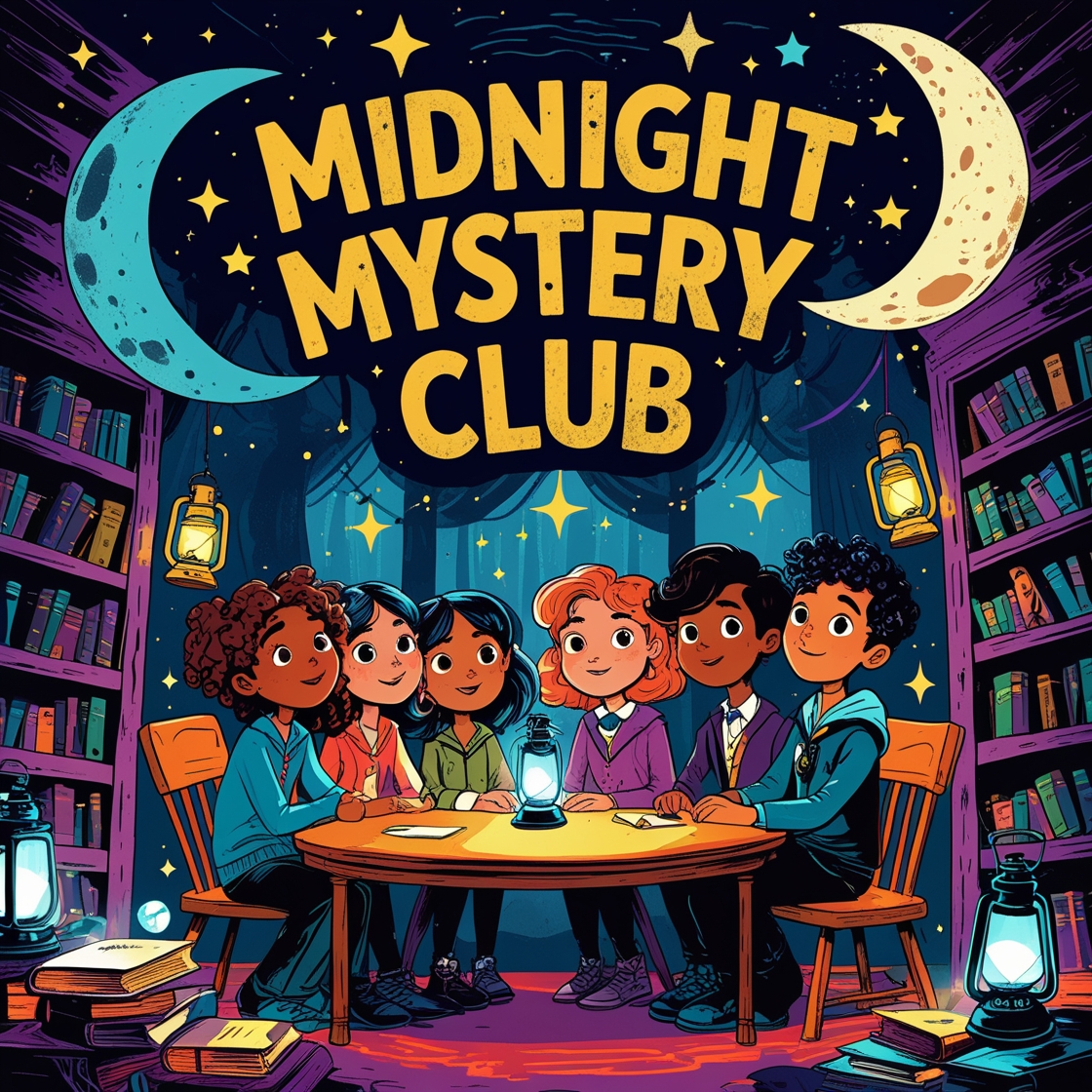Discovery is the exciting moment when the unknown becomes known, when a simple question transforms into a groundbreaking answer, and when human curiosity opens doors to new possibilities. It is the driving force behind scientific breakthroughs, geographical exploration, and personal growth. Discovery has shaped history from unlocking the mysteries of space to revealing the hidden wonders of the deep ocean, and from finding ancient civilizations to inventing life-changing technologies.
The Power of discovery isn’t only about famous explorers or great inventions.
You can divide discovery into:
- Scientific Discovery
- Geographical Discovery
- Personal Discovery
- Accidental Discovery
Scientific Discovery
Story of Newton and the apple how observation led to the laws of gravity.
Discovery of penicillin by Alexander Fleming a “mistake” that saved millions of lives.
1. The Falling Apple and the Man Who Redefined the Universe Isaac Newton’s Gravity
In the year 1666, as the Great Plague swept through London, universities closed their doors. A young scholar named Isaac Newton returned to his family home in Woolsthorpe, a quiet English village surrounded by orchards and rolling hills. While the world was consumed by disease and uncertainty, Newton found himself with nothing but solitude, books, and his own thoughts.
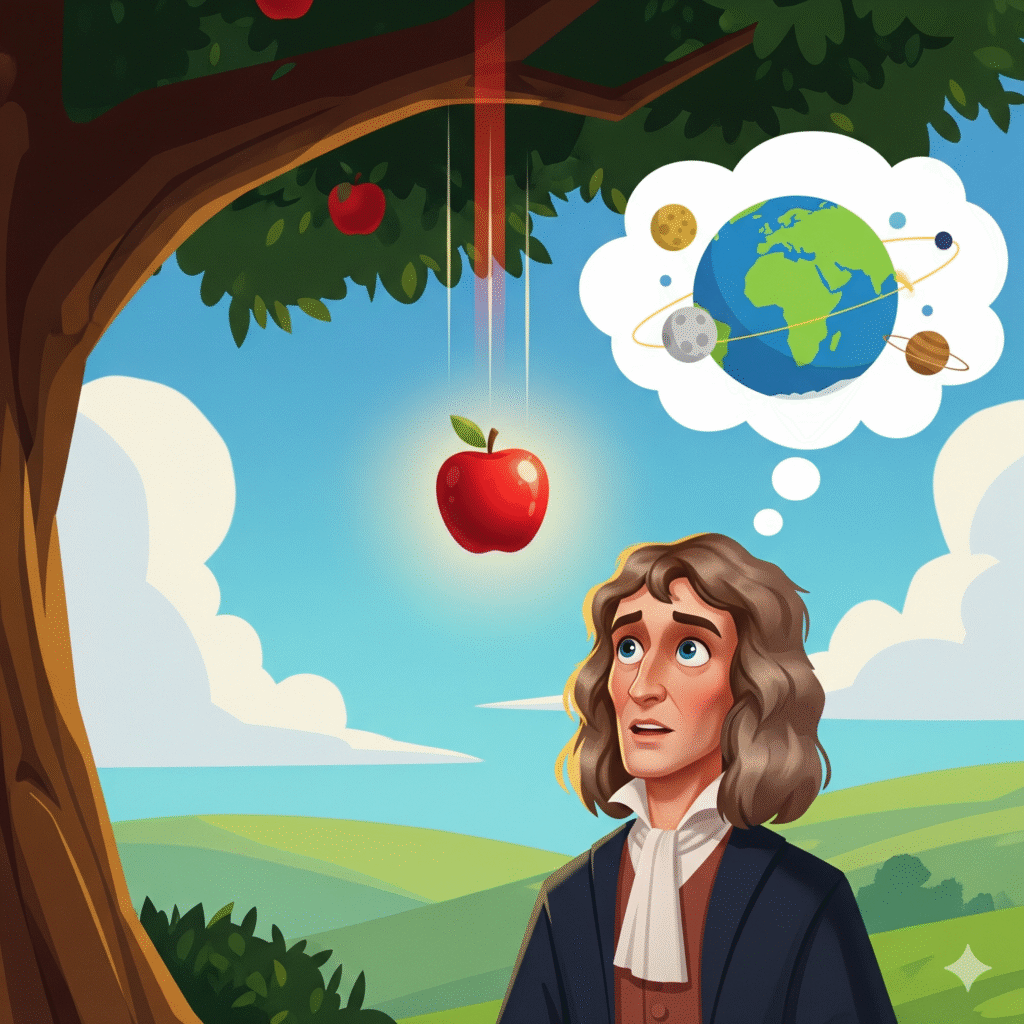
One warm afternoon, Newton sat beneath an apple tree, lost in contemplation. As the wind shook the branches, an apple detached and fell to the ground. For most people, it would have been an ordinary sight, but Newton’s mind worked differently. He didn’t just see the apple fall he asked why. Why did it fall straight down? Was the force pulling it the same one that kept the moon in orbit? Could one universal law explain both earthly and celestial movements?
Over the following months, Newton worked tirelessly in his study, scribbling equations late into the night. His thoughts wandered from apples to planets, from simple observations to grand theories. Eventually, he formulated his Law of Universal Gravitation, a discovery that transformed science forever.
The apple story, though sometimes romanticized, reminds us of something profound: great discoveries often begin with ordinary moments but only when paired with extraordinary curiosity.
2. The Messy Lab and the Accident That Saved Millions Alexander Fleming’s Penicillin
In September 1928, Alexander Fleming returned from a holiday to his cluttered laboratory at St Mary’s Hospital in London. On his workbench sat several petri dishes where he had been growing colonies of Staphylococcus bacteria. Most scientists would have simply discarded them after all, mold had contaminated one dish. But Fleming paused. Something unusual caught his eye: around the mold, the bacteria had vanished, leaving a clear ring.
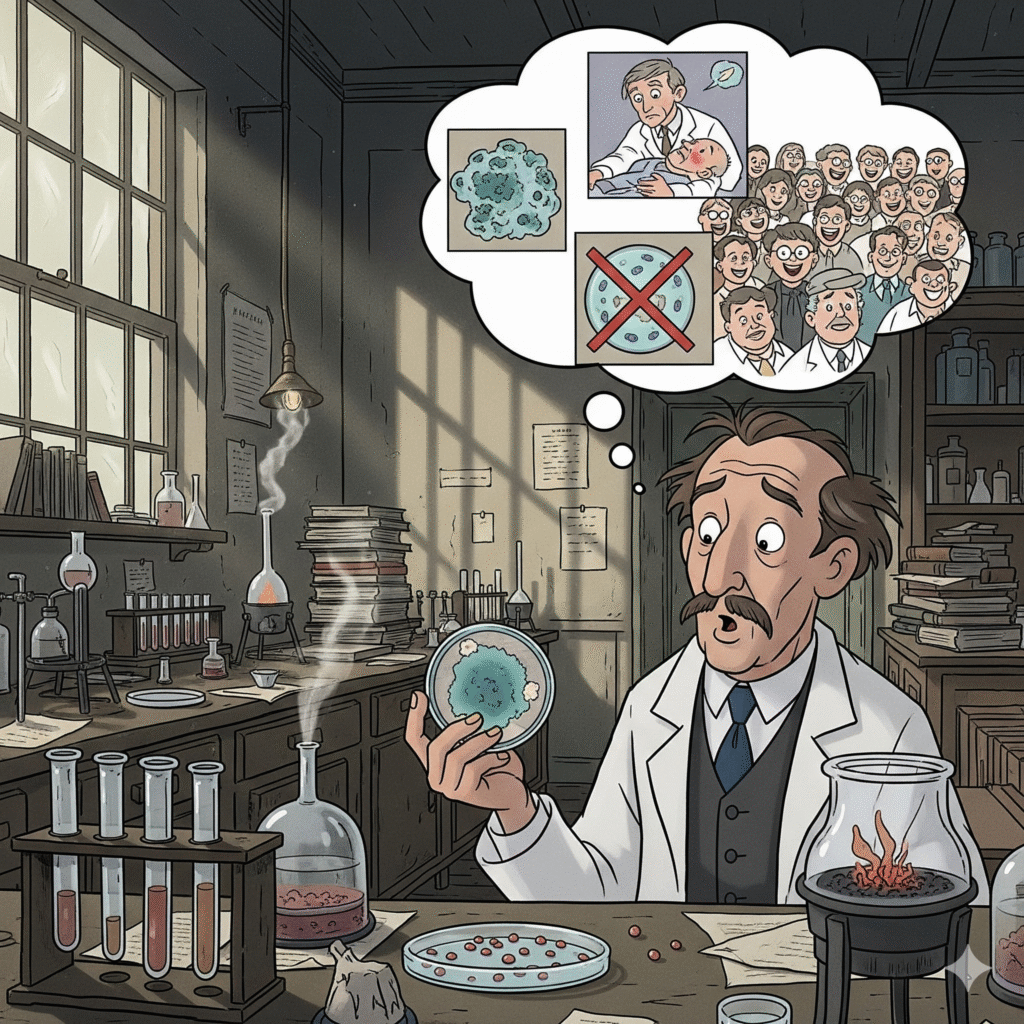
The mold, later identified as Penicillium notatum, was producing a substance that killed harmful bacteria. Fleming’s keen observation, combined with his refusal to ignore what others might consider a mistake, led to the world’s first antibiotic.
At first, penicillin’s potential wasn’t fully recognized, and years passed before it was mass-produced. But during World War II, penicillin saved countless soldiers from deadly infections. By the 1950s, it had revolutionized medicine, turning once-lethal diseases into treatable conditions.
Fleming’s discovery was a triumph not just of science, but of humility the willingness to learn from what appears to be an error.
3. Seeing the Invisible Rosalind Franklin and the Shape of DNA
In the early 1950s, a quiet, meticulous scientist named Rosalind Franklin was working at King’s College London, specializing in X-ray crystallography a technique that used beams of X-rays to reveal the atomic structure of molecules. She was studying DNA, a molecule so small that no microscope could reveal its true form.
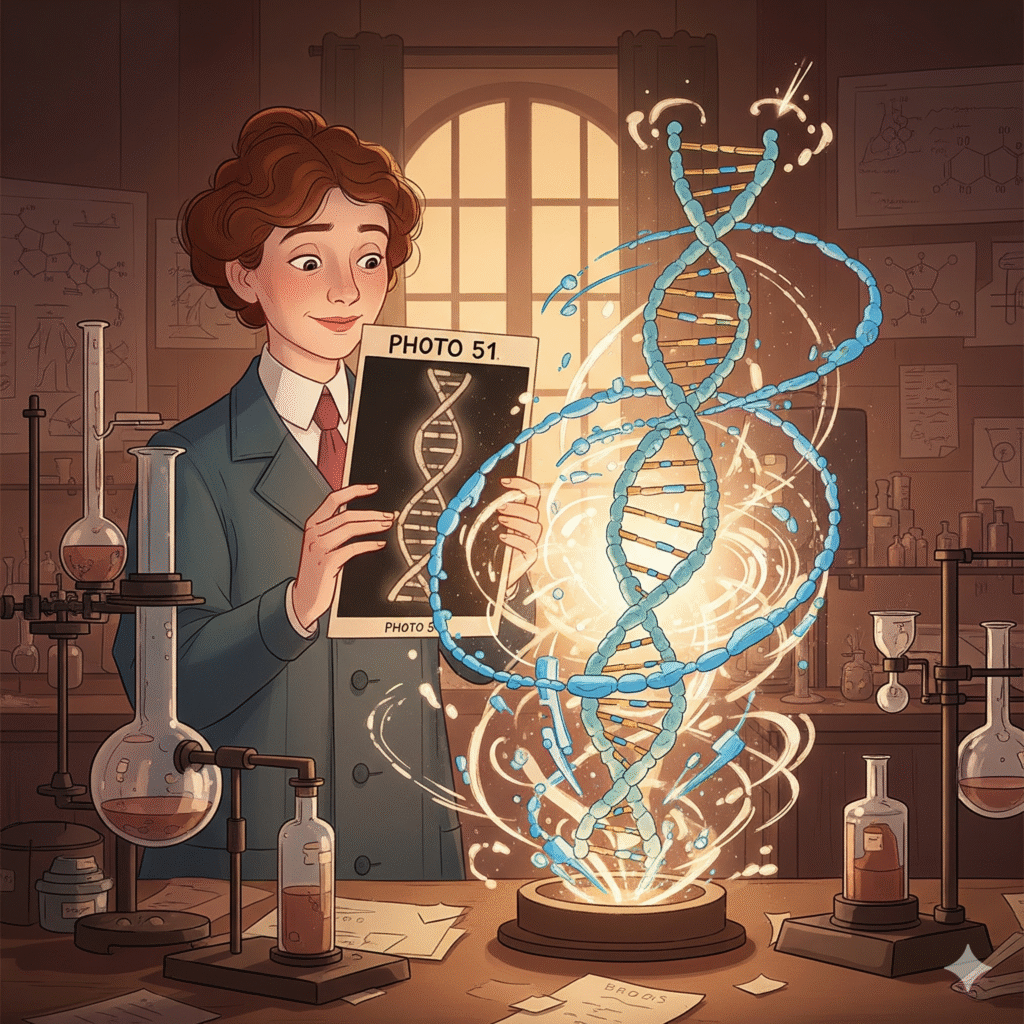
Her work required extraordinary patience: carefully preparing DNA fibers, controlling humidity, and taking long exposures, sometimes for over 100 hours, to capture a single image. One photograph in particular Photo 51 showed a striking X-shaped pattern, clear evidence of a helical structure.
This photograph would become the key to understanding the double helix nature of DNA. Unfortunately, Franklin’s contributions were overshadowed during her lifetime; James Watson and Francis Crick, who saw her photograph without her direct permission, used it to confirm their famous model of DNA.
Though recognition came late, Franklin’s work was a scientific turning point. Her precision and dedication helped unlock the blueprint of life itself, opening the door to modern genetics, medicine, and biotechnology.
4. A Universe in a Drop of Water Antonie van Leeuwenhoek’s Microscopic World
In the 17th century, Dutch tradesman Antonie van Leeuwenhoek was not a trained scientist. He sold cloth and linens, but in his spare time, he had an obsession: grinding lenses. Over the years, he crafted lenses so powerful that they could magnify objects over 200 times their actual size far more advanced than most microscopes of his day.
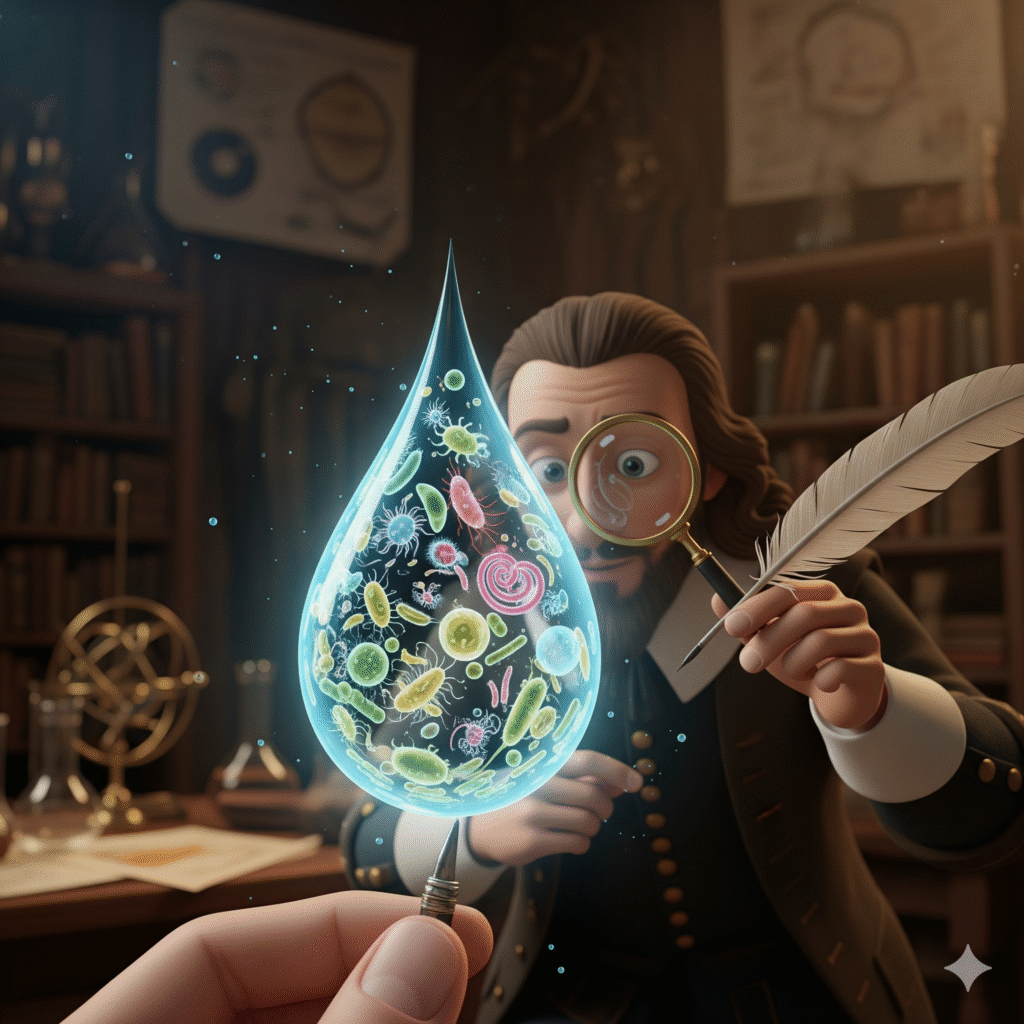
One day, he placed a drop of pond water under his lens. What he saw shocked him tiny, wriggling creatures swimming through the droplet, invisible to the naked eye. He called them “animalcules.” He saw them in rainwater, in human saliva, and even on his own teeth.
Van Leeuwenhoek sent detailed letters and sketches to the Royal Society in London, describing a hidden world teeming with life. Many scientists at the time were skeptical, but repeated observations proved him right.
His discovery of microorganisms forever changed biology, medicine, and our understanding of life. The man who began as a cloth merchant had revealed an entire unseen universe.
5. The Flash That Changed Physics Henri Becquerel’s Radioactivity
In 1896, French physicist Henri Becquerel was studying phosphorescence how certain materials glow after being exposed to sunlight. He hypothesized that uranium salts might produce X-rays after exposure to light. He wrapped photographic plates in black paper, placed uranium salts on top, and left them in sunlight.
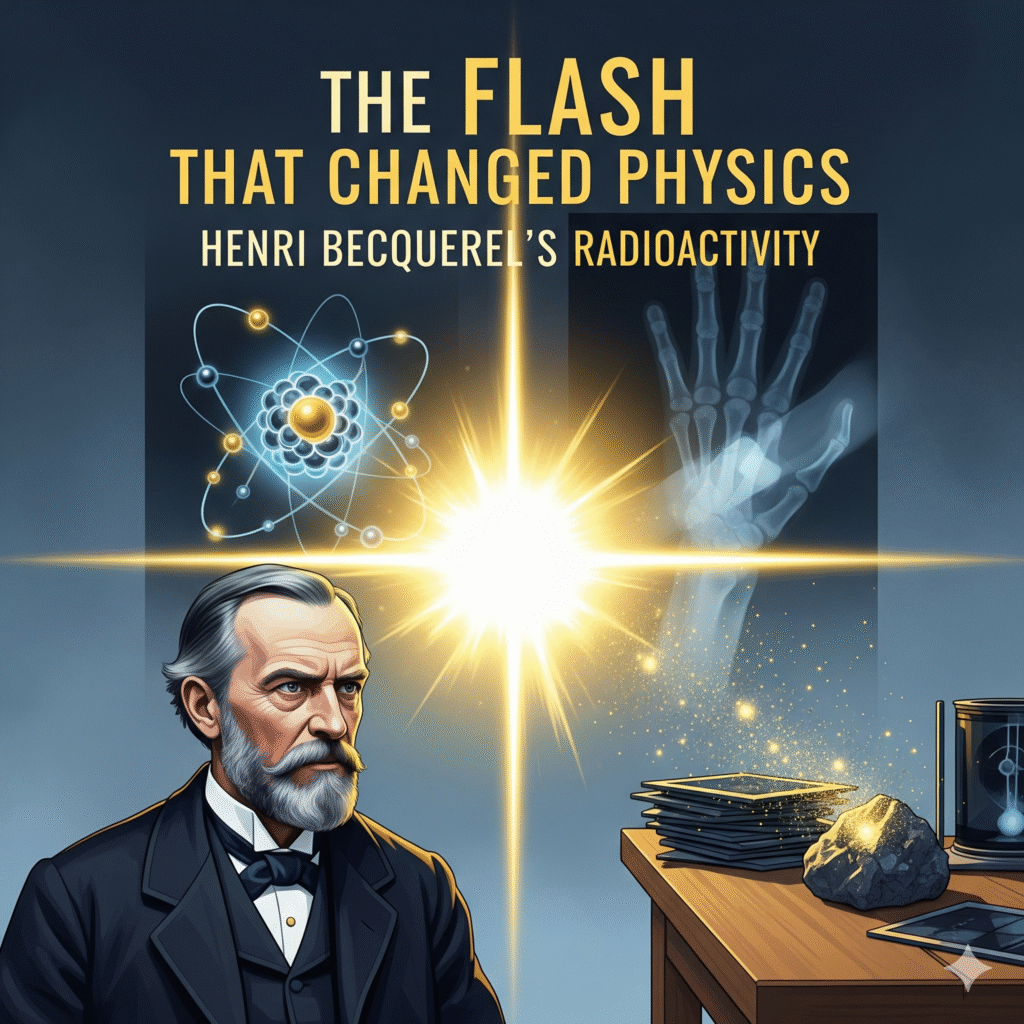
But then came a cloudy day. Unable to conduct his test with sunlight, Becquerel stored the uranium and plates in a drawer. Days later, when he developed the plates, he was astonished they showed strong images as if they had been exposed to light, even though they had been kept in darkness.
The uranium was emitting its own energy, something no one had seen before. This mysterious energy later named radioactivity would lead to groundbreaking advances in physics, medicine, and energy production, though it would also raise serious ethical and safety concerns.
Becquerel’s cloudy-day accident became a turning point in science, proving that sometimes, discoveries happen when experiments go “wrong” in exactly the right way.
Geographical Discovery
Christopher Columbus “finding” the Americas (and the debate over what discovery truly means).
Modern examples: exploration of deep oceans or Mars rovers discovering signs of ancient water.
1. Crossing the Endless Horizon Ferdinand Magellan’s Circumnavigation
In 1519, five ships set sail from Seville, Spain, under the command of Portuguese explorer Ferdinand Magellan. His goal was bold and dangerous: to find a westward route to the Spice Islands, a journey that no European had ever completed. The crew of 270 men faced uncharted waters, fierce storms, and the constant threat of mutiny.
For months, they crossed the Atlantic and navigated the treacherous straits at the tip of South America, a twisting passage later named the Strait of Magellan. Beyond lay an ocean so calm that Magellan called it the “Pacific” though its size was beyond anything he had imagined. For nearly 100 days, they sailed without sight of land, surviving on dwindling rations, drinking brackish water, and even boiling leather for food.
When Magellan was killed in a skirmish in the Philippines, the expedition seemed doomed. But under Juan Sebastián Elcano’s leadership, one ship the Victoria pressed onward. In 1522, it limped back to Spain with only 18 survivors.
They had sailed around the entire globe. The world, once thought boundless and fragmented, was now proven to be connected, a single sphere and the Age of Global Exploration had truly begun.
2. The Frozen Passage Roald Amundsen and the South Pole
In the early 20th century, reaching the South Pole was considered the ultimate geographical challenge. Norwegian explorer Roald Amundsen had originally planned an expedition to the North Pole, but upon hearing that it had already been claimed, he secretly shifted his focus to the southernmost point on Earth.
In 1911, Amundsen and his team of four men set off from their base camp on the Ross Ice Shelf, each pulling sleds loaded with supplies. Temperatures plunged below -40°C, and the endless white landscape played tricks on the mind. Navigation relied on the sun’s position, compasses distorted by the Earth’s magnetism, and sheer endurance.
Amundsen’s team used skis and dog sleds, allowing them to move faster than their rivals, the British expedition led by Robert Falcon Scott. On December 14, 1911, Amundsen and his men planted the Norwegian flag at the South Pole the first humans to stand there.
Scott’s team arrived a month later, devastated to find they had been beaten. Tragically, none of them survived the return journey. Amundsen’s victory was not just about reaching a point on a map it was about preparation, adaptation, and the will to survive in the harshest place on Earth.
3. The Man Who Found a Hidden City Hiram Bingham and Machu Picchu
In 1911, American historian Hiram Bingham was searching for the lost Incan capital of Vilcabamba in the mountains of Peru. Local farmers told him about mysterious stone ruins high above the Urubamba River, a place they called Machu Picchu.
Guided by a local boy, Bingham climbed a steep, muddy trail through dense jungle. As he emerged from the foliage, he was stunned by what he saw terraces carved into the mountainside, stone temples aligned with the sun, and walls so precisely fitted that not even a knife blade could slip between the stones.
Although Machu Picchu had never been completely forgotten by locals, it was unknown to the outside world. Bingham’s photographs and writings captured global attention, revealing a breathtaking city that had survived centuries of isolation.
Today, Machu Picchu is one of the world’s most famous archaeological sites, a reminder that even in the modern age, great wonders can still be hidden among the clouds.
4. The River That Led to the Heart of Africa David Livingstone’s Zambezi Expedition
In the mid-19th century, much of Africa remained unmapped by Europeans, who often saw the continent only through the lens of trade routes along the coasts. Scottish missionary and explorer David Livingstone was determined to chart the interior, both for scientific knowledge and to combat the slave trade by opening new paths for commerce.
In 1855, while navigating the Zambezi River, Livingstone heard a thunderous roar and saw mist rising into the sky. As he approached, the river plunged in a massive curtain of water, creating one of the most spectacular sights he had ever seen. He named it Victoria Falls, though its older local name, Mosi-oa-Tunya (“The Smoke That Thunders”), captured its raw power far better.
Livingstone’s reports and maps fascinated the public back in Britain, fueling both admiration and debate. His journeys opened European eyes to the landscapes of Africa, though they also paved the way for imperial ambitions showing how geographical discovery could be both a marvel and a burden.
5. Finding the Roof of the World The First Conquest of Mount Everest
For centuries, Mount Everest known locally as Chomolungma in Tibet and Sagarmatha in Nepal had stood as the tallest, most intimidating peak on Earth. At 8,848 meters (29,029 feet), it was shrouded in deadly weather, treacherous ice, and dangerously thin air. Many climbers attempted to reach its summit in the early 20th century, but all failed.
In 1953, a British expedition led by John Hunt brought together climbers from different backgrounds, including New Zealander Edmund Hillary and Nepali Sherpa Tenzing Norgay. They battled blizzards, frostbite, and exhaustion, inching their way up with ice axes and oxygen tanks.
On May 29, 1953, Hillary and Tenzing reached the summit. The view from the “Roof of the World” stretched endlessly, clouds swirling beneath their feet. They stood there for only 15 minutes, aware that survival depended on the dangerous descent.
Their success was celebrated worldwide, symbolizing human determination and the spirit of exploration. The mountain had not been “conquered” rather, it had allowed them passage, rewarding courage with a glimpse from the top of the world.
Personal Discovery
Someone realizing their hidden talent late in life.
Traveling alone and discovering resilience and adaptability.
1. The Day Maya Learned to Paint Her Own Life
Maya had always been the “responsible one” the eldest daughter in a busy household, the dependable employee who never said no, the friend who always listened but never spoke about herself. At 32, her life looked perfect from the outside: a stable job, a nice apartment, a calendar full of commitments. But inside, she felt invisible, even to herself.
One rainy Saturday, while waiting for a delayed train, she ducked into a small art gallery she had never noticed before. The room smelled faintly of turpentine and old wood. On the far wall hung a painting of a woman standing at the edge of a cliff, arms open, eyes closed, hair flying wildly in the wind. Something about it stopped Maya in her tracks.
The gallery owner approached and told her the artist painted it after leaving a life that didn’t feel like her own. “Sometimes,” he said softly, “you need to create your own view instead of waiting for someone to hand it to you.”
That night, Maya bought a small canvas and a set of paints. She wasn’t good at first, but the act of mixing colors and letting her hand move felt like meeting herself for the first time. Over the next year, she painted every weekend. Eventually, she realized she wasn’t just painting she was rewriting her life, stroke by stroke.
2. The Mountain That Taught Daniel How to Breathe
Daniel had lived in the city all his life, where days were filled with deadlines, honking cars, and the constant hum of fluorescent lights. At 40, he felt exhausted but couldn’t say why. His doctor told him his health was fine “just stress.” But Daniel wondered if this constant heaviness was simply life’s default setting.
When a friend invited him on a hiking trip in the Rockies, he almost refused. He wasn’t an “outdoors person.” But something in him maybe curiosity, maybe desperation made him say yes.
The first day was brutal. His legs burned, his back ached, and thin mountain air made him dizzy. But then, halfway up the second day’s climb, he stopped to catch his breath and looked around. The valley below stretched endlessly, rivers twisting like silver ribbons. The silence was deep and pure. For the first time in years, he inhaled without feeling hurried.
By the end of the trip, Daniel realized the mountain had taught him something profound: life doesn’t have to be lived on fast-forward. Back in the city, he started making small changes walking instead of rushing, saying no to unnecessary commitments, leaving his phone behind on evening strolls.
The mountain didn’t just give him a view; it gave him space to breathe.
3. A Letter to the Self I Forgot Leila’s Rediscovery
Leila had been a teacher for 20 years. She loved her students, but somewhere between lesson plans and grading papers, she had lost touch with the girl who once filled notebooks with poetry. Her days were efficient, predictable safe, but silent inside.
One summer break, while cleaning out her late grandmother’s attic, she found a box tied with a faded ribbon. Inside were her own poems, written as a teenager. She read them aloud in the dusty light, her voice trembling at the memory of who she used to be.
That night, she wrote her first poem in years awkward, hesitant, but alive. She decided to write one every day that summer, not for publication or praise, but for herself. The more she wrote, the more she realized her poetry wasn’t gone it had simply been waiting for her to return.
By September, she walked into her classroom different. She taught literature with new fire, encouraging her students to write fearlessly, as she had once forgotten to do.
Leila discovered that sometimes, the person you need to meet most is the one you used to be.
4. The Cafe Window Where Amir Saw His Future
Amir’s life was a careful routine: wake up at six, commute to his office job, answer emails, attend meetings, go home, repeat. He often told himself he should be grateful and he was, in a way. But gratitude wasn’t the same as joy.
One evening, his train broke down, forcing him to walk home through a neighborhood he’d never explored. It was drizzling, and the street glowed with reflections from neon signs. He passed a small café with a steamy window, where a man sat playing the piano. The music floated out into the street warm, inviting.
Amir stepped inside. The café owner noticed him staring at the piano and asked if he played. “Not since I was a kid,” Amir replied. “Then maybe it’s time again,” she said with a smile.
He started coming back once a week, playing simple melodies at first, then more complex ones as his hands remembered. Music didn’t just fill the room it filled something hollow in him.
Months later, he began performing on weekends, nothing grand, but enough to make him feel awake. He discovered that happiness often waits just outside your usual path, behind an unexpected window.
5. The Day Saira Danced in the Street
Saira had always admired dancers their grace, their confidence but she never thought it could be her. She was shy, self-conscious, convinced her body didn’t “fit” the image. She worked as an accountant, her life full of numbers but empty of movement.
On a trip to Spain, she wandered into a street festival in Seville. Music pulsed from every corner, and the air was thick with the scent of oranges and fried churros. A group of flamenco dancers spun and stomped in the square, their skirts flaring like flames. One dancer noticed Saira watching and beckoned her to join.
She shook her head at first, but the crowd clapped, the music swelled, and something in her broke free. She stepped forward, awkward at first, then caught the rhythm. The crowd cheered as she moved, laughing through her own surprise.
That night, she realized the moment hadn’t been about skill it had been about freedom. Back home, she joined a beginner’s dance class. She wasn’t aiming to perform; she just wanted to keep that feeling alive.
Saira’s personal discovery was simple yet life-changing: joy isn’t about perfection, it’s about participation.
Accidental Discovery
- Chocolate chip cookies invented when the chocolate didn’t melt completely.
- Velcro inspired by burrs sticking to clothing.
1. The Lunchtime Mistake That Cooked the Future Percy Spencer and the Microwave
In 1945, engineer Percy Spencer was working at the Raytheon Corporation, testing radar technology during World War II. One day, as he stood near a magnetron (a vacuum tube used to generate microwave signals), he felt something odd the chocolate bar in his pocket had melted.
Intrigued, Spencer didn’t shrug it off. He experimented by placing popcorn kernels near the magnetron they popped wildly. Then he tried an egg, which promptly exploded, leaving a mess and a laughing group of colleagues.
Spencer realized that microwaves could rapidly heat food from the inside out. Over the next few months, he designed the first microwave oven a massive, refrigerator-sized machine that was expensive but revolutionary.
Decades later, microwaves became a kitchen staple, saving busy people hours of cooking time. What started as a melted candy bar in a lab pocket ended up reshaping the way the world eats.
2. The Sticky Situation That Held the World Together Spencer Silver and the Post-it Note
In 1968, chemist Spencer Silver at 3M was trying to create a strong adhesive. Instead, he invented a weak, pressure-sensitive glue that stuck lightly to surfaces but could be peeled off without damage. It was interesting but seemingly useless.
For years, Silver demonstrated it to colleagues, hoping someone would find a purpose. Then, in 1974, another 3M scientist, Art Fry, faced a personal problem the bookmarks in his church hymnbook kept falling out. He remembered Silver’s adhesive and thought, “What if I coat paper with it?”
The result was the Post-it Note a small square of paper with a reusable sticky strip. At first, marketing teams were unsure people would buy it. But once they tried it, they couldn’t stop.
Today, offices, classrooms, and homes worldwide use Post-its for reminders, brainstorming, and little notes of love or humor all thanks to an adhesive that was “too weak to work.”
3. The Sour Milk That Revolutionized Medicine Alexander Fleming’s Penicillin
In 1928, Scottish bacteriologist Alexander Fleming returned from vacation to find his London laboratory a bit of a mess. He had left several petri dishes with Staphylococcus bacteria on his workbench, and one dish had been contaminated by airborne mold spores.
But something strange caught his eye the bacteria near the mold had been destroyed, while colonies farther away were unaffected. The mold, identified as Penicillium notatum, was producing a substance lethal to many harmful bacteria.
Fleming realized he had stumbled upon a powerful natural antibiotic. Though it took more than a decade for others to develop it into usable medicine, penicillin eventually saved millions of lives during World War II and beyond.
A moment of untidiness in a lab the kind most scientists would discard became one of the most important medical breakthroughs in history.
4. The Sweet Mistake That Made Chocolate Chips
In the 1930s, Ruth Wakefield owned the Toll House Inn in Massachusetts, famous for its desserts. One afternoon, while baking chocolate cookies, she ran out of baking chocolate. Improvising, she chopped up a Nestlé semi-sweet chocolate bar, thinking the pieces would melt and spread evenly through the dough.
Instead, the chocolate pieces softened but held their shape, creating pockets of rich, gooey chocolate in each bite. Her customers loved the new cookies, and word spread quickly.
Nestlé struck a deal with Wakefield, printing her recipe on their packaging in exchange for a lifetime supply of chocolate. Thus, the chocolate chip cookie was born not from culinary perfection, but from running out of an ingredient and trying something different.
Today, it’s one of the most popular cookies in the world, a reminder that sweet surprises often come from mistakes.
5. The Dye That Painted the World Purple William Perkin’s Mauve
In 1856, 18-year-old William Perkin was a chemistry student trying to synthesize quinine, a treatment for malaria. Working in his home lab, he accidentally created a dark, sticky substance. Most would have thrown it away, but Perkin noticed it stained fabric a vivid purple that didn’t wash out.
At the time, purple dye was rare and extremely expensive, reserved for royalty. Perkin had discovered the first synthetic dye mauveine. He quickly realized the commercial potential, set up a factory, and by his early twenties, had made synthetic purple accessible to ordinary people.
This accidental discovery didn’t just change fashion it opened the door to the synthetic chemistry industry, paving the way for artificial dyes, medicines, and other chemical innovations.
What began as a “failed” medical experiment ended up coloring the Victorian era and beyond.
Discovery in Everyday Life
Make it relatable:
- Learning a new recipe and accidentally creating your signature dish.
- Finding a hidden park in your own city.
- Reading a book that changes your worldview.
The Dark Side of Discovery
- Not all discoveries are harmless nuclear weapons, environmental exploitation.
- Ethical responsibility: just because we can discover something doesn’t mean we should use it without caution.
How to Embrace Discovery in Your Life
Give readers practical tips:
- Stay curious: ask “why” and “what if.”
- Try new hobbies, meet new people.
- Travel (even locally).
- Keep a “discovery journal” write down new things you notice daily.
Conclusion Of The Endless Journey
Wrap up with the idea that discovery never ends there’s always something new to learn, big or small.
“The world is full of undiscovered wonders some in distant galaxies, others in your own backyard, and many within yourself.”
For more bedtime stories, check our Discovery Stories Collection
Meet the Author
Namra Asim is a passionate storyteller and content creator, dedicated to writing engaging bedtime stories, magical adventures, and inspiring tales for readers of all ages. Through InspiredNap.com, Namra shares original stories filled with imagination, morals, and life lessons to spark creativity and bring comfort to readers around the world.

